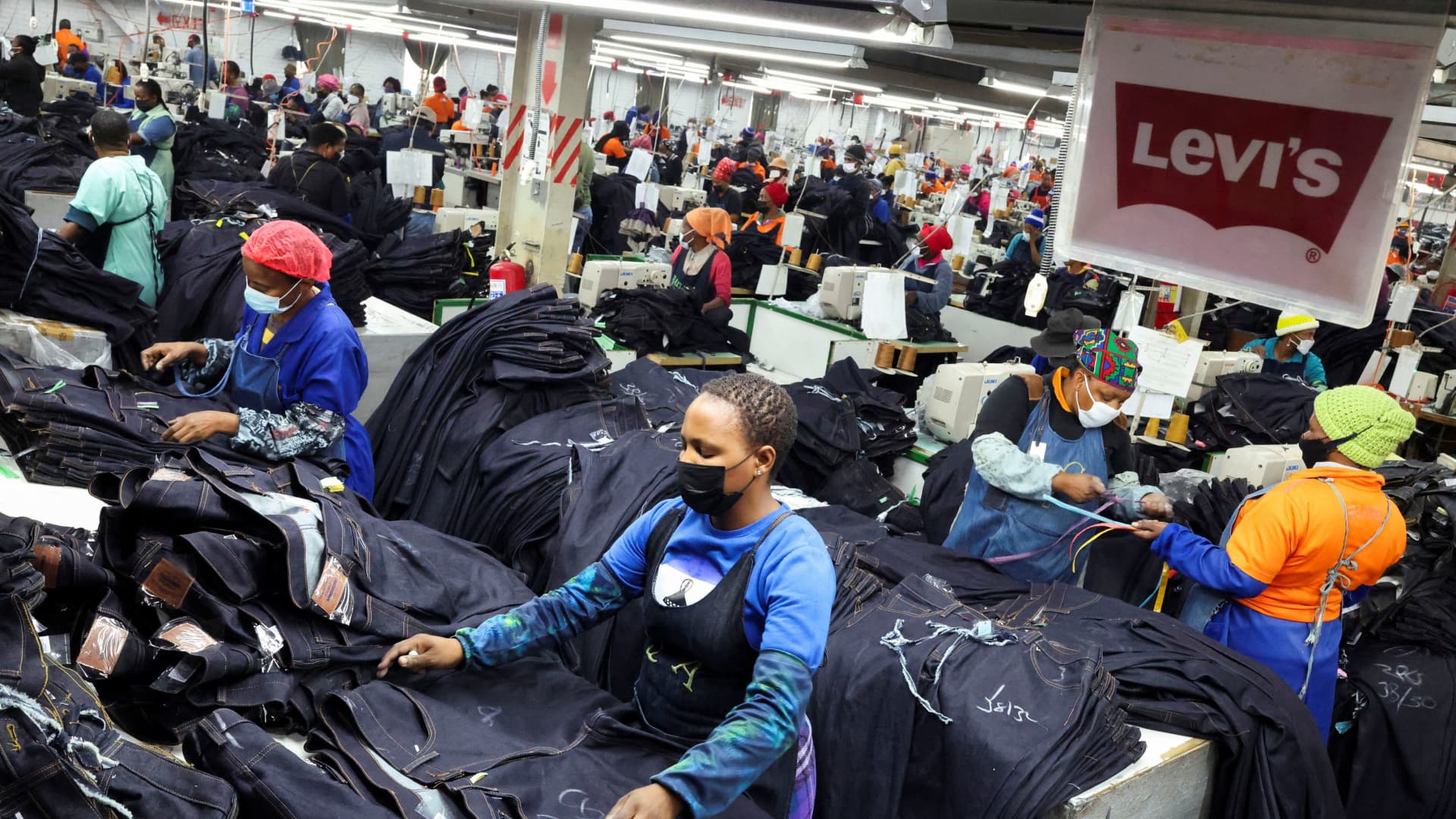Levi Strauss raised its full-year guidance Thursday and said it’s working to absorb some of the costs it’s facing from higher tariffs, but that could change as President Donald Trump’s trade policy evolves.
The denim maker doesn’t disclose its key manufacturing hubs, but much of its supply comes from Southeast Asia. Many countries in the region have been targeted by Trump’s so-called reciprocal tariff plan.
Levi’s is currently expecting its full-year adjusted earnings to be between $1.25 to $1.30 per share, up from a prior forecast of between $1.20 and $1.25 and better than the $1.23 analysts had expected, according to LSEG. However, that forecast only assumes a 30% tariff on China, where Levi’s manufactures about 1% of its products, and a 10% tariff on the rest of the world, which could change as Trump negotiates trade deals with key manufacturing regions.
In an interview with CNBC, Levi’s finance chief Harmit Singh said most of Levi’s sourcing is from countries like Pakistan, Bangladesh and Indonesia. Trump in recent days threatened Bangladesh and Indonesia with duties of more than 30%. It’s unclear how much of Levi’s products are sourced from those regions, and 60% of Levi’s business is outside of the U.S.
For now, Levi’s said it’s planning to absorb what it can. As policy currently stands, it anticipates tariffs will only impact the business by $25 million to $30 million for the rest of the year, or 2 to 3 cents on earnings per share.
“We are doing our part. We are absorbing some of the costs. What helps is that our business is so strong,” said CEO Michelle Gass. “We have been pulling back on promotions anyway, that’s leading to more full-price selling, and some of our new innovation, our new fits, we’re pricing at a premium, and they’re buying. So all of those things help us navigate this time of having the tariff headwind.”
Beyond tariffs, Levi’s delivered fiscal second quarter earnings that beat expectations on the top and bottom lines. Here’s how the jeans company did compared with what Wall Street was anticipating, based on a survey of analysts by LSEG:
- Earnings per share: 22 cents adjusted vs. 13 cents expected
- Revenue: $1.45 billion vs. $1.37 billion expected
Levi’s shares rose about 8% in extended trading.
The company’s reported net income for the three-month period that ended June 1 was $67 million, or 17 cents per share, compared with $18 million, or 4 cents per share, a year earlier. Excluding one-time charges related to restructuring and impairment expenses, among other costs, Levi posted earnings per share of 22 cents.
Sales rose to $1.45 billion, up about 6% from $1.36 billion a year earlier.
Given strong demand, Levi’s raised its full-year revenue guidance and now expects sales to rise between 1% and 2%, up from previous guidance of down 1% to 2%. That range is well ahead of expectations. Analysts had expected revenue to decline by 5.2%, according to LSEG.
Levi’s did cut its gross margin guidance by 0.2 percentage points, and now expects gross margin to grow by 0.8 percentage points because of the impact tariffs are having on profits.
Since Gass took over as the retailer’s CEO, she’s worked to cut off underperforming parts of the business. In May, the company announced it would sell its Dockers brand to Authentic Brands Group.
She’s also worked to drive direct sales to consumers, focused on e-commerce and stores rather than wholesale partners like Macy’s and Kohl’s, because it comes with higher margins and gives the company better insights into its customers.
During the quarter, Levi’s gross margin reached what it called a record 62.6%, driven by fewer markdowns, lower product costs and 11% growth in direct sales.
Levi’s, which has long catered to a male shopper, is also trying to win over female consumers and expand from a denim company to one known for a wide range of apparel. During the quarter, it saw wins from those efforts, with revenue for women’s apparel up 14% and sales of tops up 16%. Levi’s women’s category is the retailer’s “highest gross margin business,” said Singh.
“The consumer is definitely responding and voting for this direction. So as we look ahead, we’re confident,” Gass told CNBC. “We know that there’s uncertainty in the world right now, but the consumer is proving quite resilient for Levi’s.”
At the core of Levi’s strategy is ensuring it’s still relevant with consumers. A recent partnership with Beyonce has helped the company stay top of mind with shoppers, especially as the singer continues her Cowboy Carter tour.
In May, the company launched a limited-edition drop of Beyonce x Levi’s T-shirts, the first product to come from the collaboration.
It also started a partnership with Nike, which went live on Thursday on Levi’s website and some of its stores. The collection includes a denim-inspired take on the Air Max 95.





